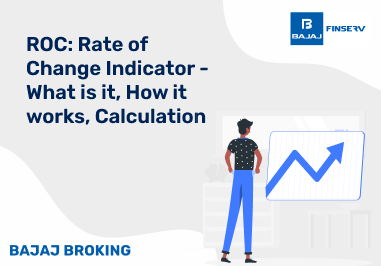What is SEBI?
The Securities and Exchange Board of India, commonly abbreviated as SEBI, was formed to act as the regulatory authority for the securities and commodities market in India. It was primarily formed to encourage the orderly development of the securities market, keeping in view the protection of investors and prevention of unfair trade practices. SEBI ensures that there exists a structure through which trading of securities is carried out in a transparent and efficient manner.
The regulatory framework includes stock exchanges, brokers, mutual funds, and many other market intermediaries. This is committed to maintaining the integrity of the market, ensuring fair practices, and regulating all the participants effectively. From making sure companies disclose information to preventing fraud, SEBI stands at the center of an effective securities market in India. Now that we have understood SEBI's meaning, let’s discuss its history.
Additional Read: How to Invest in Share Market?
History of SEBI
The need for fair and efficient regulation led to the formation of SEBI in 1988 as a non-statutory body to check the irregularities of the securities market. Indian capital markets showed great growth in the 1980s but still did not have effective oversight, and the unregulated practices like insider trading, price manipulation, and poor disclosure practices by companies occurred.
Realizing the need for a regulatory authority, the government enacted the SEBI Act in 1992 that gave SEBI statutory powers. The power accorded to SEBI enabled it to make rules, enforce regulations, and impose penalties. Through the years, SEBI has already implemented several landmark reforms in respect of mutual fund regulation, enhancement of corporate governance structures, and measures to curb insider trading among others.
Today, the Securities and Exchange Board of India is one of the world's top institutions that keep pace with changing modern financial markets. Proactive efforts, such as the use of technology in surveillance of markets, have placed SEBI in a league of its own among financial sector regulators.
Objectives of SEBI
Objectives of SEBI include investor protection, regulation of the securities market, and encouraging widespread growth in the market.
Investor Protection
Securities and Exchange Board of India protects the public, especially the retail participants from fraudulent practices. Hence, it imposes strict norms for disclosure and provides adequate information to the investor for taking a decision.
Regulation and Development:
SEBI regulates the stock exchanges, brokers, and other intermediaries of the market so that the securities market is well-ordered and fair. It also promotes innovation in new financial products and technologies.
Prevention of Malpractices
Securities and Exchange Board of India seeks to eliminate malpractices like insider trading, price rigging, and market manipulation. It enforces regulation through surveillance and penalties.
Market Stability and Integrity
SEBI ensures fairness and transparency, thus generating confidence in investors as well as market participants and consequently stabilizing the financial markets in India.
Investor Protection
The primary objective of SEBI is investor protection. SEBI aims at bringing fair, transparent markets in place for each market participant and for the retail investor, in special. Some key initiatives include :
Disclosure Norms: SEBI requires companies to disclose all material information in their public offerings, thus enabling investors to have correct data for evaluation of opportunities.
Grievance Redressal Mechanism: Securities and Exchange Board of India gives a platform for investors to complain against the intermediary, brokers or companies.
Creating Awareness: It carries out awareness campaigns where it educates investors so they can make smart choices, and detect frauds.
Proactive Surveillance: SEBI uses advanced monitoring systems to detect irregularities and take corrective actions promptly.
Regulation and Development of the Securities Market
The regulatory and development roles of SEBI go hand in hand with each other. Its functions in regulation include monitoring the stock exchanges, brokers, and other intermediaries for transparency and fairness. The regulatory body, SEBI, enforces the trading rules and guidelines to facilitate smooth trading activities on the trading platforms.
The development front is encouraged by SEBI through innovations like e-trading platforms and the introduction of new financial products, such as Real Estate Investment Trusts. This way, SEBI facilitates greater participation through digital adoption and market accessibility that contribute to a robust financial ecosystem.
Prevention of Insider Trading
Insider trading undermines market integrity and erodes investor trust. SEBI combats this through:
Strict Rules: SEBI defines insider trading and decides the punishment for those violating the rules in the Prohibition of Insider Trading Regulations.
Mandatory Disclosures: Directors, executive officers, and other insiders have to disclose shareholdings and transactions.
Advanced Surveillance: Securities and Exchange Board of India uses AI systems to monitor unusual trading patterns and identify possible insider activities.
By preventing insider trading, SEBI ensures that the securities market is fair and open. .
Promotion of Fair Practices and Code of Conduct
For the market to work well, SEBI has regulations for brokers, middlemen, and listed companies. The regulations emphasize: Ethical behavior demands honesty, transparency, and accountability in market dealings. SEBI regularly checks and inspects to ensure that the rules are followed. Companies that indulge in unethical practices are fined, suspended, or taken to court. This emphasis on fair practice develops investor trust and keeps the market competitive.
Prohibition of Fraudulent and Unfair Trade Practices
SEBI’s rules clearly ban actions like price rigging, front-running, and false advertisements. It does this by:
Surveillance Mechanisms: SEBI observes trading activity to detect and halt fraud.
Investor Education: Educates the public on popular fraud schemes and safeguards vulnerable investors.
Legal Actions: SEBI penalizes violators, deterring future malpractices.
By dealing with fraud, SEBI keeps the market fair and builds trust.
Development of a Secondary Market
SEBI’s role in developing a robust secondary market is vital for liquidity and price discovery. Key initiatives include:
Trading Infrastructure: SEBI watches over how stock exchanges work to make sure transactions are efficient and safe.
Dematerialization: By encouraging demat account, SEBI has made trading easier and removed the risks of physical securities.
Fosters retail and institutional participation, improving market depth through encouragement.
Organizational Structure of SEBI
SEBI works under a clear system, which helps it function well. Board members will comprise representatives from the Ministry of Finance, RBI, and market experts.
The various departments of SEBI emphasize particular areas like legal enforcement, investor education, and market surveillance.
SEBI has regional offices to cater to the localized market needs.
Functions and Powers of SEBI
There are three major functions of SEBI, which are regulation, development, and protection. As a regulator, it provides rules for the market players, and as a protector, it protects the investors. On the development front, SEBI brings new financial instruments and helps people cope better with finance. It regulates stock exchanges, imposes penalties upon noncompliance, and makes audits. It writes new rules to fill the gaps in the market.
Conclusion
SEBI ensures that the securities market of India is secured, transparent, and efficient. Its regulatory measures protect investors and promote growth by maintaining market stability, making it a cornerstone in India's financial ecosystem.














